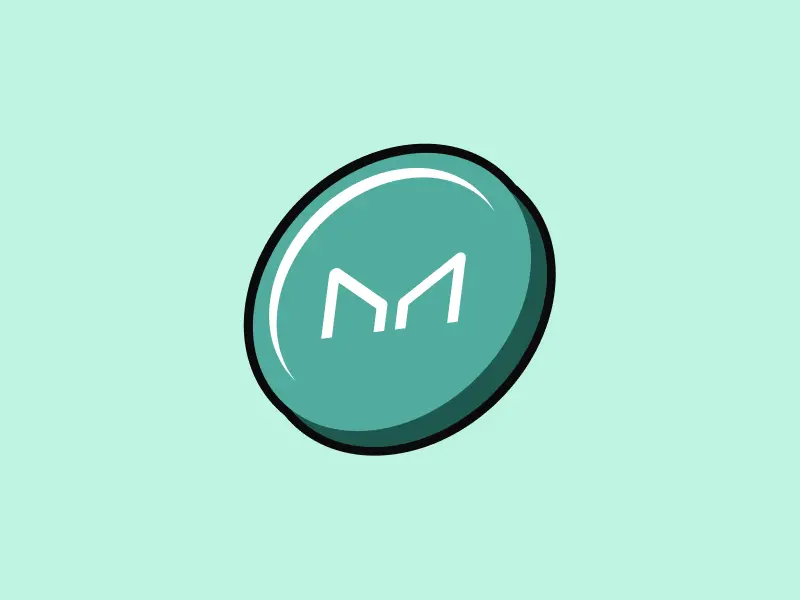How to effectively govern the collective DAO treasury?
Original Title: “The Path of DeFi | A Guide to Diversified Asset Allocation for DAO Treasuries”
Source: Crypto VC 1kx Research Analyst Justin M
Translation: The Path of DeFi
Introduction
According to OpenOrgs.info, the largest DAO treasuries have accumulated billions of dollars in managed assets. These funds are primarily concentrated in the protocol's native governance tokens, leading to various challenges, such as:
- Diversifying the treasury while minimizing market impact
- Managing specific risks of the protocol while holding concentrated positions
- Funding workflows and compensating contributors with highly volatile assets
Many DAOs are beginning to acknowledge these challenges, leading to a shift in perspectives on more complex asset management strategies.
This article is the first in a multi-part series that will explore these strategies and provide guidance on how to effectively govern collective DAO treasuries.
In this first article of the series, we discuss treasury diversification as a means to reduce the concentration of native DAO tokens and provide guidance on constructing allocations in a positive-sum manner. Throughout the article, we draw on our experiences as primary investors in two DAO treasury allocations (Index Coop, Forefront) and as participants in another allocation (Visor).
Benefits of Diversification
Before delving into specific details, let’s review why DAOs should consider partially diversifying investments into stablecoins.
Allocating to stablecoins can:
- Mitigate overall portfolio volatility
- Offset future operational expenses
- Increase the resilience of the DAO during market turmoil
Since DAOs with concentrated native token treasuries are inherently reflexive, the outlook of stakeholders can significantly alter the valuation of the treasury. If external events or negative future outlooks drive price dislocations, the DAO will lose access to its purchasing power when it is most needed. Diversifying into non-speculative assets can enhance capital reserves, allowing the DAO to maintain operations during bear markets.
Moreover, as Hasu recently pointed out, the native tokens held in DAO treasuries are essentially unissued authorized shares of a traditional company. These shares are not considered assets but merely represent the potential total supply available to the protocol or company. A DAO can realize some purchasing power by selling these unissued tokens, but it may be significantly below market quotes. In other words, when analyzing a DAO treasury's available purchasing power, we should primarily focus on its diversified allocation.
However, obtaining stablecoin allocations ultimately requires the DAO to sell its native tokens, which involves some nuanced issues. Methods for raising stablecoins can include, but are not limited to:
Over-the-Counter (OTC) Trading: This is a distribution strategy where tokens are directly exchanged for another asset without going through secondary market liquidity. This can involve direct trades between institutional investors and/or the community, minimizing direct price impact and potentially offering additional flexibility regarding token lock-up and vesting schedules. We will focus on this particular approach in this article.
Market Sales: This is the most straightforward method of raising stablecoins but also the most detrimental to price. Selling on the market can signal a negative outlook on the current valuation to stakeholders. Additionally, selling in illiquid markets or selling large amounts in a short time can exert downward pressure on prices.
Conditional Order Strategies: This is an alternative method of selling on the market, utilizing condition-based orders to gradually divest over time. This can include calendar-based rebalancing, TWAP/VWAP strategies, limit orders, and others.
Financial Derivatives: Derivative strategies can include establishing hedged collateralized debt positions, using new financial primitives like UMA's range tokens, implementing liquidity management plans, rebalancing through protocols like Visor, or adopting other revenue-generating strategies like Ribbon's treasury. These are often complex or require the DAO to conduct significant marketing to sell the issuance and are generally a more hands-on way of raising funds.
Before initiating any of the above strategies, consensus must be reached within the DAO, as treasury rebalancing will affect all stakeholders. We recommend creating a governance proposal and voting to ensure everyone is aligned on the need for stablecoin allocations and the methods for obtaining stablecoins. At this stage, reviewing the goals and plans for handling the proceeds is also advisable.
Executing the Allocation
1. Design and Determine the Scope of Fundraising
Before raising funds, the specific needs of the DAO must be determined. Ask yourself how much funding you ideally want to raise and what the minimum acceptable amount is. Consider both stablecoins and native DAO tokens—be satisfied with the potential range of allocation amounts and ensure the maximum allocation amount of native tokens is acceptable. Finally, set a target date for completing the fundraising; ideally, this should be a quick process so you can return to building.
Once you have completed all of this, you can begin gathering community consensus on the financing. Early consensus from the community will help prevent issues like the SushiSwap's Sushi Phantom Troupe-Strategic Raise proposal, which suggested divesting about 51mm SUSHI tokens from the community treasury to bring in various institutional investors. For reference, the terms included a 6-month cliff followed by 18 months of linear vesting, with a 20-30% discount to a 30-day TWAP. Proceeds would be deployed into productive assets like Yearn, stable pool LPs, and Kashi markets.
This proposal faced community backlash. Concerns were raised about the scale of the transaction relative to overall financial assets, the number of strategic investors being introduced, and the significant discount during a period when SUSHI token prices were already depressed.
By pre-assessing consensus and ensuring key stakeholders are onboard, the DAO can prevent similar occurrences.
Transaction Scale
Selling tokens from the community treasury ultimately presents a multi-constraint optimization problem. The project must maximize the capital raised while minimizing the number of tokens sold, all while attracting the highest quality investors who are also optimizing for their own economic constraints. All of this must be accomplished as quickly as possible so that the DAO can refocus on its actual goals.
If a DAO sells too many tokens for too little capital, it undermines the project's long-term viability. High-quality investors will understand this and push for the fairest price rather than the lowest price. For example, when ForeFront approached us for fundraising, they initially valued the project at a fully diluted network valuation of $3 million (a 50% discount to spot) and sought to raise $800,000, which was about 30% of their funding. We realized that $800,000 would not provide much room for the project to grow, and they were selling a lot of tokens early in the project's life. With this in mind, we offered the community a $10 million valuation (later raised to $20 million to meet demand), as this was beneficial for both us and the DAO. If we followed up at a lower price, our investment would do more harm than good.
A simple goal for a DAO's first treasury diversification allocation might be to raise enough stablecoins to fund 1-2 years of operational expenses. This frees up resources to focus on building the DAO without the ongoing pressure of operational funding. Considering the aforementioned constraint optimization problem, you can adjust this number up or down, but it provides a starting point for internal discussions.
Discounts and Vesting
DAOs should establish appropriate vesting terms to ensure long-term alignment with partners. The length of the terms can vary and should take into account the depth of the discount and the appetite of investors.
Typical vesting periods range from 1-2 years. Exceeding this period is feasible and indicates greater long-term alignment between strategic partners and the DAO, but extending the vesting period should be balanced with demand.
When a transaction includes a vesting period, a discount to the current price is typically offered. This discount accounts for the issue of illiquidity. A simple way to understand this is through a thought experiment: if you have two tokens on the secondary market, one with a 1-year lock-up and the other without, assuming they have the same trading volume, which one would you choose to buy as an investor? The rational choice is to opt for the more liquid option, as the illiquid option does not provide any net benefit.
Now, suppose the illiquid token is 30% cheaper than the more liquid option. You know that regardless of how the token price fluctuates within the year, you will earn 30% more after one year than if you had directly purchased the spot. Suddenly, it becomes rational to consider which one to buy. Therefore, if the transaction terms include a lock-up period, a sufficient discount must be provided to incentivize taking on the illiquidity risk.
As the transaction progresses, the discounted token price needs to be committed for several months, during which market fluctuations can lead to significant discounts/premiums to spot. However, adjusting prices in response to market volatility can be unsettling for all parties involved. Instead, it should be executed in a robust manner, making changes only when absolutely necessary.
Delegated Negotiation Authority
Once you have designed the scope of fundraising, determined your constraints, and built community consensus around the need for a sale, you can identify representatives from the DAO to lead the effort in attracting investors.
Due to the complexity and sensitivity of the negotiation process, it makes sense to delegate DAO negotiations to a team of contributors, as Index Coop has done with their BD working group, or to the core team itself, depending on the project's level of decentralization. Ideally, this team will consist of members with prior business development or financial experience, but it is generally understood that not all DAOs have these types of members. An important point is to ensure that negotiations are handled by a small group to achieve speed and accountability during the negotiation process.
2. Composition of Investors
Selecting participants is one of the most critical components of fundraising. The best investors for a project are both its users and community contributors, but strategic investors can also complement the strengths and weaknesses of your project.
Strategic Investors
Some DAOs pursue investments from strategic partners to help them grow their protocols. These strategic investors can include investment DAOs (like MetaCartel, Seed Club), institutional investors (like 1kx), or angel investors who can bring experience and expertise to help guide the project from idea to execution.
DAOs should carefully consider whether they want a lead investor, and if so, who should lead this round. The benefits of having a lead include:
Helping the DAO fill this round with investors. Additional investors are selected for their specific attributes, experience, or networks, which can maximize the value of the DAO when combined with others in this round of financing. The lead can help structure the round in a way that supports community goals.
Acting as a liaison between the DAO's negotiation team and the investor group. Typically, the lead will negotiate on behalf of the entire investor group, minimizing negotiation time between all parties involved.
Since lead investors play a crucial role, it is best for the DAO to choose a lead who shares a similar spirit or vision. If the DAO wishes to expand into a specific vertical, finding a lead who has done something similar for other DAOs will bring the most value to the project. Consider the DAO's greatest risks and find parties that can help mitigate those risks.
Typically, lead investors (often venture funds) may demand a significant portion of the round due to the economics of their funds and their goal of token network ownership. This is for the community to decide whether the value of the fund will bring net benefits to the community rather than seeking a more diversified group of investors. However, sometimes having more investors can backfire on the project, as you may need a concentrated few investors to hold significant stakes in the game. We generally recommend giving a larger share to a few investors rather than a broader distribution, which often leads to investor apathy, with no investor feeling accountable for the project.
However, a lead is not always necessary. Think of the lead as another tool in the toolkit to help the DAO accomplish its mission. If the DAO wishes to have a more diversified round or have more practical control over the negotiation process, then not having a lead is perfectly acceptable. Choose the approach that best fits your situation and constraints.
If the DAO intends to seek investment from institutional investors, they should consider reporting requirements. These requirements will vary by investor, their third-party service providers (auditors/administrators/accountants), as well as jurisdiction and structure. Investors will greatly benefit from additional verification and information regarding the investment, which may include:
Details of the smart contracts/investment terms (obtaining written confirmation of the allocation mechanism from a smart contract auditor is also beneficial).
Instructions on how to query the smart contracts to view locked/claimable tokens, or a basic front-end user interface that allows investors to connect their wallets and view their positions.
A memorandum of understanding or term sheet, which is not a legally binding agreement, outlining everyone's understanding of the mechanisms and providing contacts for investor audits (signed by core contributors of the DAO and investors).
A primary concern for institutional investors revolves around their own audit work. Unfortunately, auditors are currently not mature enough to verify the mechanisms of smart contracts. In the traditional world, if assets are held by a third party, auditors would contact a point of contact to verify that funds are securely held and that they are owed back or controlled by the investor. In smart contracts, this is not possible, so providing as much clear information as possible will benefit investors.
Community Investors
Remember, your best strategic partners are your own community members. A successful treasury diversification allocation should include a distribution that aligns with the community's conditions. Forefront and Index Coop both did this in their recent rounds of treasury sales.
In Forefront's sale, the DAO reserved a maximum allocation of $200,000 FF (20%) out of $1 million FF for the community, prioritizing Forefront contributors who made significant contributions to the DAO. The grant cap was set at $10,000, with a minimum contribution of $5,000.
Index Coop also offered grants to the community. Eligibility was determined by reviewing which members received contributor rewards in the three months prior to the sale. These members were allowed to purchase under the same terms as strategic investors, including a 6-month linear vesting period and a discount to market prices, with a total cap of $100,000 per contributor.
Creating the Final Proposal
When determining the final transaction terms, all DAO members should have a voice. Community consensus is an ongoing process and should be managed in an open and transparent manner within the DAO's capabilities. For this reason, we recommend drafting a proposal and allowing the DAO to vote before finalizing the allocation. Sometimes the proposal is created by the founders (Forefront), sometimes by the community (Index Coop), and sometimes by the lead VC. Regardless, it is always aimed at reaching an agreement among stakeholders.
Through a deliberative process conducted on forums, the community will be able to appropriately discuss and amend the proposal to ensure it aligns with the DAO's goals. The proposal should emphasize the goals of capital raising, the specific terms of the transaction (such as discounts, vesting periods), and how the community can participate. Additionally, it should provide the community with ample time to reflect before closing the round of financing.
Treasury diversification will open a new chapter for many DAOs, providing them with the ability to focus on their specific missions without being constrained by the fear of ongoing operations. Treasury diversification allocations serve as a means to ensure stablecoin distributions of funds without significantly impacting prices, while also motivating new stakeholders to align their goals with the DAO.








